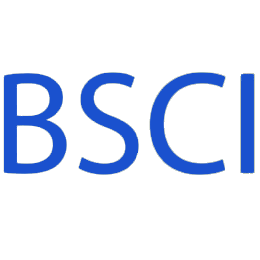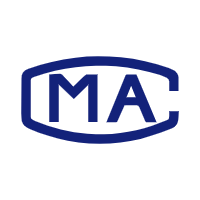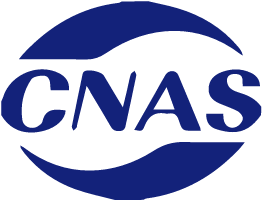
Project Introduction
Packaging is an indispensable part of commodities and plays an indispensable role in the circulation of commodities. Packaging materials are often discarded by consumers after they are used, and then into environmental soil. The hazardous substances contained in them will directly cause harm to the environment. Therefore, countries around the world attach great importance to the control of packaging materials, such as the European Union 94/62/EC "European Parliament and Council Directive on Packaging and Packaging Waste Disposal" on "Restriction of Hazardous Substances", "Reproducibility", and "Renewable Reuse" ", "Contains recycled materials" and other packaging regulations.
US Packaging Regulations TPCH (CONEG)
CONEG is a local regulation established by the Northeast Association of Chiefs of the United States (8 states) in 1989 to reduce heavy metal content in packaging and packaging materials. With the establishment of TPCH in 1992, CONEG was also renamed TPCH. However, the TPCH test methods and requirements are the same as CONEG and remain unchanged, and the requirements for the control of products and toxic and hazardous substances are basically the same as those of the European Union.
EU Packaging Directive
Introduction of EU Packaging Directive:
EU packaging directive abbreviation: Packaging and packaging waste (Packaging and packaging waste), directive name: December 20, 1994 European Parliament and Council Directive 94/62/EC on packaging and packaging waste. The main reason for the management/regulation of packaging materials is that packaging materials are often discarded by consumers arbitrarily after they are used, and enter the environmental soil. The harmful substances contained in them will directly pollute the environment.
On February 7, 2013, the European Union issued Directive 2013/2/EU in the Official Gazette to amend Appendix I of the 94/62/EC Packaging and Packaging Waste Directive. This directive will take effect 20 days after it is published in the official gazette.
2013/2/EU amended Annex I of 94/62/EC (Illustrative example of the definition of packaging in Article 3, paragraph 1, of the EU Packaging and Packaging Waste Directive), and the amended Annex I example guidelines (i) , (Ii), and (iii) add 19, 4, and 2 illustrative examples respectively. These illustrative example lists clarify the boundaries between packaging and non-packaging. Although the EU Packaging Directive has been revised many times, the requirements for the management of hazardous substances in packaging materials have not changed.
Test objects include:
Product packaging carton, carton, wooden frame, film box, plastic bag, bubble bag, foam, poly dragon, fixed equipment, sheet, rope, paint, ink, tape, glue, cable tie, label, manual, etc.
1. This directive relates to all packaging and all packaging waste placed on the market in the Community, whether it is applied or discarded in industry, commerce, offices, shops, services, households, or any other area, and has nothing to do with the materials used.
2. The application of this Directive does not affect the existing packaging quality requirements, such as packaging products related to safety, health and hygiene protection or existing transportation requirements or the Council Directive 91/689/EEC on December 12, 1991 on hazardous waste Provisions.
Controlled substances and limits:
The EU Packaging Material Directive (94/62/EC) regulates the maximum concentration limits of the four heavy metals (lead, mercury, cadmium and hexavalent chromium):
Lead (Pb) + Cadmium (Cd) + Mercury (Hg) + Hexavalent Chromium (Cr+6) <100ppm
As of June 30, 2001, the total amount of total lead, cadmium, hexavalent chromium, and mercury contained in all packaging and packaging components cannot exceed 100 ppm
The "packaging component" is the smallest part of the packaging and can be easily separated by hand. Compliance with the directives is demonstrated by inspection or based on calculations based on heavy metal inspection of packaging materials.
U.S. packaging regulations
CONEG is a local regulation established by the Northeast Association of Chiefs of the United States (8 states) in 1989 to reduce heavy metal content in packaging and packaging materials. With the establishment of TPCH in 1992, CONEG was also renamed TPCH. However, the TPCH test methods and requirements are the same as CONEG and remain unchanged, and the requirements for the control of products and toxic and hazardous substances are basically the same as those of the European Union.
Packaging material and product testing definition
The inspection of packaging materials and products refers to some or various special tests on the protection quality and protection methods of materials and products used to meet the packaging requirements of products such as manufacturing packaging containers, packaging and decoration, packaging printing, and packaging transportation. process.
Inspection range of packaging materials and products
Packaging materials and product testing can be divided into the following parts according to the type of material:
(1) Inspection of packaging materials for paper products
Testing of paper materials and products such as paper and cardboard. Paper materials and products are the most widely used strains in production and life. The quality of paper is directly related to the quality of products. Paper product packaging materials testing includes printing performance, mechanical performance, weather resistance and other major types of performance. Common quality problems of packaging materials for paper products include: the printing performance and mechanical performance of paper products do not meet product standards and use requirements; cargo damage caused by poor weather resistance; the release of harmful substances from paper products, causing pollution or damage to products.
(2) Inspection of plastic packaging materials
Testing of plastic packaging materials and products. Plastic packaging is also an important type of packaging that is second only to paper in our daily life. The testing items of plastic packaging materials mainly include: mechanical properties (tensile, tear, puncture, etc.), barrier properties (moisture resistance, oxygen barrier, etc.), weather resistance, optical performance, antistatic performance, foaming material cushioning performance, etc.
Common quality problems of plastic packaging materials include: insufficient mechanical properties and barrier properties; discoloration, brittleness, melting, adhesion, cracking and other phenomena in weather resistance tests; light transmittance and UV transmittance are not up to standard; surface resistance is in the specified environment Outliers in testing, poor material cushioning performance, etc.
(3) Inspection of wooden packaging materials
The testing of wooden packaging materials refers to the testing of wooden materials such as wood and wood-based panel products used for supporting, protecting or carrying materials for commodities. The testing items of wooden packaging materials mainly include: static bending strength, flexural strength, bonding strength, nail holding force, water content, formaldehyde emission, weather resistance, etc.
Common quality problems of wood packaging materials include: board breakage; product rust caused by high wood moisture content; formaldehyde release and harmful gas release.
(4) Inspection of composite packaging materials
The detection of composite packaging materials is for two or more materials, which are combined together after one or more composite processes to form a composite material with certain functions. The testing items of composite packaging materials mainly include: barrier performance, mechanical performance, weather resistance, light resistance, anti-static performance, etc.
Common quality problems of composite packaging materials include: barrier properties (moisture permeability, oxygen permeability) and mechanical properties fail to meet the specifications; aluminum foil bags and aluminum-plated bags have poor light resistance; electrical properties such as surface resistance do not meet the standards.
(5) Food packaging inspection
Food packaging has the functions of protecting food, preventing the damage of biological, chemical, physical and other external factors in the circulation process, and maintaining the stable quality of food itself, which can not only facilitate the consumption of food, but also show the appearance of food and attract consumption, enhance the product value. Common food packaging materials are paper, plastic, wood, glass, metal, etc.
Food packaging testing items mainly include: protection performance (physical performance is the same as the detection performance of the above types of materials), food safety performance (chemical performance (hygienic performance, heavy metals, hazardous substances (plastic additives, paints, solvents, etc.)), microorganisms, etc. ).
Common food packaging quality problems include: food swell caused by poor sealing and barrier properties; excessive solvent residues, detection of plastic additives exceeding specified requirements; microbial contamination of products, etc.


BSCI certification is an abbreviation of BusinessSocialComplianceInitiative, and Chinese is called business social standard certification. BSCI is an organization that advocates the business community to abide by social responsibility. At the same time, it is a non-profit organization.

CMA, the name is \"China Metrology Accreditation\", the abbreviation of \"China Metrology Accreditation\" in English. According to the provisions of Article 22 of the Metrology Law of the People’s Republic of China: “The product quality inspection agency that provides notarized data to the society must be evaluated by the metrological administrative department of the people’s government at or above the provincial level for the capability and reliability of metrological verification and testing. Qualified.\"

Laboratory accreditation is a third-party certification that CNAS has the ability to perform specific testing and calibration work for testing and calibration laboratories.
Packaging is an indispensable part of commodities and plays an indispensable role in the circulation of commodities. Packaging materials are often discarded by consumers after they are used, and then into environmental soil. The hazardous substances contained in them will directly cause harm to the environment.
Get a quote